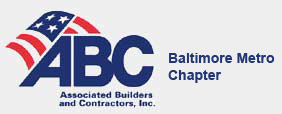How to use The Pipeline
Project Description
The Baltimore Metropolitan region is one of the oldest populated areas in the US and continues to grow, adding more than 200,000 (9%) people between 2000 and 2010. Much of the growth in the metro area is occurring in existing communities, especially in the case of communities within the Baltimore Beltway area, which means that residential and commercial real estate development decisions are based on infill and redevelopment opportunities. The development review process in local jurisdictions is designed to ensure contextually-sensitive development by allowing for flexibility as well as public, community-based involvement. Understanding and keeping track of the status of projects is complicated because projects evolve during the development review phase as developers ensure compliance with local land use regulations and arrive at an agreeable final design.
Project
The purpose of the Central Maryland Development Review website is to provide geographic visualization of development projects and track them as they go through the review process. The points on the interactive map represent the status of the project at the time of any public hearing for which approval is required in order to obtain a building permit.
The Pipeline
The Jacob France Institute at the University of Baltimore in partnership with the Association of Builders and Contractors, Baltimore in partnership and the Economic Alliance of Greater Baltimore is developing a new on-line service �The Pipeline� that tracks development projects in the pre-planning stages as a service to developers.
Background
The Jacob France Institute is the sponsored research center for the Merrick School of Business at the University of Baltimore. The Merrick School is home to the Masters in Finance and Real Estate Degree as well as the only undergraduate Real Estate program in the State of Maryland, including among the schools in the USM system. The program was started in 2006 and currently has 60 students enrolled.
JFI is also home to the Baltimore Neighborhood Indicators Alliance which annually releases Vital Signs, over 100 community-based indicators for neighborhoods in Baltimore City. In 2012 will release the 10th edition spanning the past decade. The longitudinal and geographic scope of this information has been utilized by many organizations in Baltimore and continues to be a highly valued resource. BNIA-JFI also provides GIS services and online mapping functionality for many community-based, non-profit and academic units in Baltimore, such as a real-time foreclosure mapping site for the Baltimore Homeownership Preservation Coalition.
Development Review in Baltimore City
In the City, the four main public hearing development review processes are the following:
- Commission on Historic Preservation
- Urban Design and Architectural Review Panel
- Board of Municipal Zoning & Appeals
- Planning Commission
The proposed Master Development database keeps track of agenda items of each these development review hearings.
For more information on the Baltimore City Development Review process, visit
- Urban Design & Architectural Review Panel, Meetings occur every other Thursday, time TBA at the Planning Department (417 E. Fayette Street, 8th Floor).
- Planning Commission, Hearings occur every other Thursday starting 1:30pm at the Planning Department (417 E. Fayette Street, 8th Floor).
- Commission on Historical & Architectural Preservation, Hearings occur 2nd Tuesday of the month at 1:30 at the Planning Department (417 E. Fayette Street, 8th Floor)
- Board of Municipal and Zoning Appeals, Hearings occur every other Tuesday at 1:00pm City Hall, Room 215.
- Board of Municipal and Zoning Appeals Search



